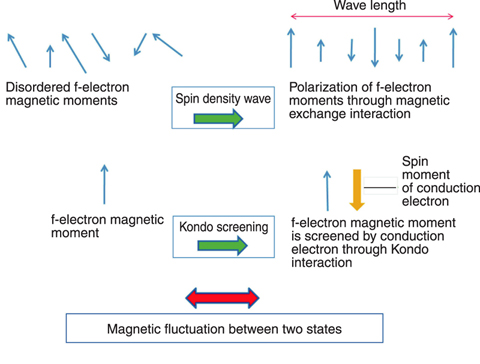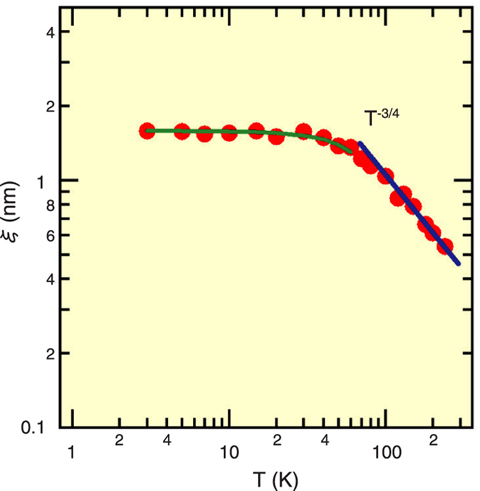
Fig.6-7 Two proposed (spin density wave and Kondo screening) models for magnetic fluctuations which may induce the unconventional superconductivity

Fig.6-8 Temperature dependence of magnetic coherence length ξ in USn3
In the superconducting state, two electrons form a pair (Cooper pair) due to attractive force. For conventional superconductors, lattice vibration (phonon) is the origin of attractive force. In contrast, for unconventional superconductors, magnetic fluctuations are believed to induce the Cooper pairs.
Recently, two different theoretical models (spin density wave and Kondo screening models) have been proposed to describe the magnetic fluctuation. However, no definitive experimental evidence has been obtained to determine which is the proper model so far. In this study, we have obtained clear experimental evidence which supports the spin density wave model in the uranium compound USn3, using the nuclear magnetic resonance (NMR) method.
In f-electron systems such as uranium compounds, local magnetic moments due to f-electrons have magnetic exchange interactions with each other, and at the same time, interact with conduction electrons through the Kondo interaction. As illustrated in Fig.6-7, if the magnetic exchange interaction is dominant, the local magnetic moments have a tendency to be polarized, making possible determination of the magnetic exchange energy (spin density wave state). On the other hand, the local magnetic moments would be screened by conduction electron spins if the Kondo interaction is dominant (Kondo screening state). In the present work, temperature dependence of magnetic coherence length is determined in USn3 from NMR relaxation measurements. Obtained experimental results (●) coincide well with those calculated from the spin density wave model (green and blue lines) as clearly seen in Fig.6-8, indicating that the spin density wave is dominant in uranium compounds.
The present study suggests that the unconventional superconductivity in uranium compounds is caused by the spin density wave fluctuation. A future new superconductor with higher Tc (superconducting critical temperature) is thought to be realizable in a magnetic-fluctuation-mediated superconducting system, since Tc of phonon-mediated superconductors has reached its peak already. This study suggests that a search for materials possessing enhanced spin density wave fluctuation would be effective for finding new high Tc superconductors.
We will be investigating actinide compounds to clarify the mechanism of superconductivity in detail.